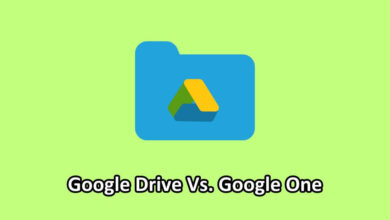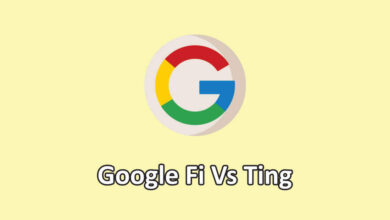Intel Core i5 Vs i7 : A Comparative Analysis of Performance
Are you ready to dive into the world of processors and witness the battle between two titans: Intel Core i5 vs i7? Brace yourself for an exhilarating ride as we embark on a comparative analysis of their performance. Whether you’re a tech enthusiast, a gaming aficionado, or simply someone curious about the inner workings of these powerhouses, this blog post will unravel the mysteries behind these processors and help you make an informed decision.
So buckle up, because we’re about to explore the cutting-edge capabilities that lie within Intel Core i5 and i7 – get ready to be blown away!
Intel Core i5 Vs i7 (Comparison Table)
| Intel Core i5 | Intel Core i7 |
|---|---|
| The Intel Core i5 series is a line of processors developed by Intel, one of the leading manufacturers of computer processors. | The Intel Core i7 series represents a higher-end tier of processors offered by Intel. |
| The Core i5 generally has a lower clock speed than the Core i7. | Core i7 has higher clock speeds, often exceeding 4.2GHz. |
| It offers 4 cores, suitable for efficient tasks. | It is equipped with 8 cores, optimized for complex operations. |
| Core i5 does not support Hyper-Threading. | Core i7 supports Hyper-Threading, enhancing multitasking. |
| The cache size of the Core i5 ranges between 3MB and 6 MB. | Core i7 has a larger cache size (8MB – 12MB+), aiding overall speed. |
| The Turbo Boost feature is not available in Intel Core i5. | Intel Core i7 supports Turbo Boost, dynamically raising clock speeds. |
| Core i5 is more affordable as it offers decent performance for everyday tasks. | Core i7, with more advanced features and higher performance, is priced higher for users needing extra power for demanding tasks like content creation and gaming. |
What is Intel Core i5?
Intel Core i5 is a family of mid-range performance desktop and laptop processors from Intel. They are designed for everyday tasks such as web browsing, office applications, media playback, and casual gaming.
Core i5 processors have four or more cores with Turbo Boost technology which allows them to dynamically increase clock speed for better performance when needed. The most recent generation of Core i5 processors, known as Kaby Lake, features enhanced graphics processing capabilities along with improved power efficiency.
What is Intel Core i7?
The Core i7 is a line of mid-range to high-end processors released by Intel in 2008. The Core i7 line includes four processors: the i7-920, the i7-940, the i7-950, and the i7-960. The core i7 processors are based on the Nehalem microarchitecture and offer improved performance over previous generations of processors.
The Core i7 processors are designed for use in desktop computers and laptops. They offer a significant performance boost over previous-generation processors, making them ideal for demanding tasks such as video editing and gaming. The Core i7 also offers support for advanced features such as Intel Turbo Boost Technology 2.0, which allows the processor to automatically increase its clock speed when needed.
Pros and Cons of Intel Core i5 and Core i7
Pros of Intel Core i5:
- Energy Efficient – The Intel Core i5 processor is an energy-efficient processor that uses less power and runs cooler than other processors in the same class.
- Price – The Intel Core i5 processor is more affordable than other processors in its class, making it a great choice for budget-conscious users.
- Performance – The Intel Core i5 processor offers excellent performance for everyday tasks such as web browsing, streaming media, and office productivity applications.
- Multiple Cores – The Intel Core i5 processor can utilize multiple cores to boost performance when needed. This makes it ideal for multitasking and heavy workloads.
Cons of Intel Core i5:
- Not the Best Choice for Gaming – The Intel Core i5 processor does not offer the best gaming performance compared to other higher-end processors like the Intel Core i7 or AMD Ryzen 7 processors.
- Limited Overclocking Capability – The Intel Core i5 processor has limited overclocking capabilities compared to other Intel processors, making it less suitable for those who want to push their system to the limits and squeeze every last bit of performance out of their hardware setup.
Pros of Intel Core i7:
- Performance – The Intel Core i7 processor offers excellent performance for gaming and other demanding tasks. This makes it ideal for users who need the absolute best in performance and multitasking capabilities.
- Multiple cores – The Intel Core i7 processor can utilize multiple cores to boost performance when needed. This makes it ideal for multitasking and heavy workloads.
- Overclocking – The Intel Core i7 processor has advanced overclocking capabilities, making it perfect for those who want to push their hardware setup to the limits and squeeze every last bit of performance out of their system.
- Price – Despite offering high-end performance, the Intel Core i7 processor is still relatively affordable compared to other processors in its class, making it a great choice for budget-conscious users who don’t want to compromise on performance.
Cons of Intel Core i7:
- Energy Use – The Intel Core i7 processor uses more power than other processors in its class, making it a less energy-efficient option than the Intel Core i5 processor or even some AMD Ryzen processors in the same price range.
- Not Always Necessary – The Intel Core i7 processor may not be necessary for users who are only engaging in everyday tasks such as web browsing, streaming media, and office productivity applications.
Key Differences Between Intel Core i5 and i7
- Clock Speed: The Core i5 generally has a lower clock speed than the Core i7. The Core i5 typically runs at 2GHz to 3.4GHz, while the Core i7 can go up to 4.2GHz or higher.
- Hyper-Threading: Hyper-threading (HT) is a feature that allows processors to work on multiple threads simultaneously, which improves multitasking and performance when running several programs at once. The Core i7 supports HT but not the Core i5.
- Cache Size: The cache size of a processor determines how quickly data can be accessed from memory and affects overall system performance significantly more than clock speed does. The cache size of the Core i5 ranges between 3MB and 6MB, while with the Core i7, it can range between 8MB and 12MB or higher.
- Turbo Boost: Turbo Boost is a feature that Intel processors use to automatically increase clock speed above the base frequency when needed. The Core i7 supports Turbo Boost, while the Core i5 does not.
Performance Comparison Between Intel Core i5 and i7
The purpose of this section is to provide a detailed performance comparison between Intel Core i5 and i7. We will first briefly introduce each processor, and then compare their performance in a number of key areas.
Intel Core i5:
The Intel Core i5 is a mid-range processor that was released in 2009. It is based on the Nehalem microarchitecture and is manufactured using a 45nm process. The Core i5 has four cores and supports Hyper-Threading, which allows it to process up to eight threads simultaneously.
It has a maximum clock speed of 3.2GHz and can turbo boost up to 2.8GHz. The Core i5 also features Intel’s Turbo Boost Technology, which allows it to automatically increase its clock speed when needed for better performance.
Intel Core i7:
The Intel Core i7 is a high-end processor that was released in 2008. It is based on the Nehalem microarchitecture and is manufactured using a 45nm process. The Core i7 has four cores and supports Hyper-Threading, which allows it to process up to eight threads simultaneously. It has a maximum clock speed of 3.4GHz and can turbo boost up to 3.0GHz.
The Core i7 also features Intel’s Turbo Boost Technology, which allows it to automatically increase its clock speed when needed for better performance
Discussion of Single Core Versus Multicore Performance
Multicore processors are designed to provide improved performance and efficiency over single-core processors. The increased number of cores allows for more calculations to be performed simultaneously, which can lead to better performance in applications that are able to take advantage of multiple cores. In addition, multi-core processors can often power down individual cores when they are not needed, leading to reduced power consumption and heat generation.
However, multicore processors are not always the best choice for every application. In some cases, a single-core processor may actually provide better performance than a multicore processor. This is often due to the fact that single-core processors have larger caches and higher clock speeds than multicore processors. As a result, they can sometimes perform individual tasks more quickly than their multicore counterparts.
Factors to Consider When Choosing Between an Intel Core i5 and an Intel Core i7
There are a few key factors to keep in mind when deciding whether an Intel Core i5 or Core i7 processor is right for your needs.
Firstly, consider what kind of tasks you’ll be using your computer for most often. If you’re mostly using your PC for general web browsing, social media, and light productivity tasks, then an Intel Core i5 processor will likely suffice. However, if you frequently use resource-intensive applications such as video editing or gaming, then an Intel Core i7 processor will better suit your needs.
Another important factor to consider is budget. Intel Core i7 processors tend to be more expensive than their Core i5 counterparts. So, if cost is a primary concern, then opting for a Core i5 processor may be the best option.
Keep in mind that the decision between a Core i5 and a Core i7 processor isn’t always black and white. In some cases, it may make sense to opt for a mid-range processor like the Intel Core i5-8400 instead of a high-end option like the Intel Core i7-8700K. Ultimately, it’s important to carefully consider all of your options before making a final decision.
Conclusion
Intel Core i5 and i7 processors are two of the most popular options for professional-level computing. When making a decision on which one to purchase, it is important to consider your needs and determine whether the extra cost associated with an i7 processor is warranted for your use cases.
With this in mind, we have provided a comprehensive comparison of both processor types that highlights their differences in performance case by case. We hope that this analysis has been useful in helping you make an informed decision when selecting the best processor for your next computer build or upgrade.
FAQs
Q. Is i5 cheaper than i7?
Generally, i5 processors are cheaper than i7 processors. However, the price difference can vary depending on the specific model and generation of the processor being compared.
Q. Which is better i5 or i7 for programming?
For programming, an i7 processor is usually better than an i5 processor due to its higher clock speed and larger cache size. Additionally, the i7 tends to be more power efficient which can help with battery life.



